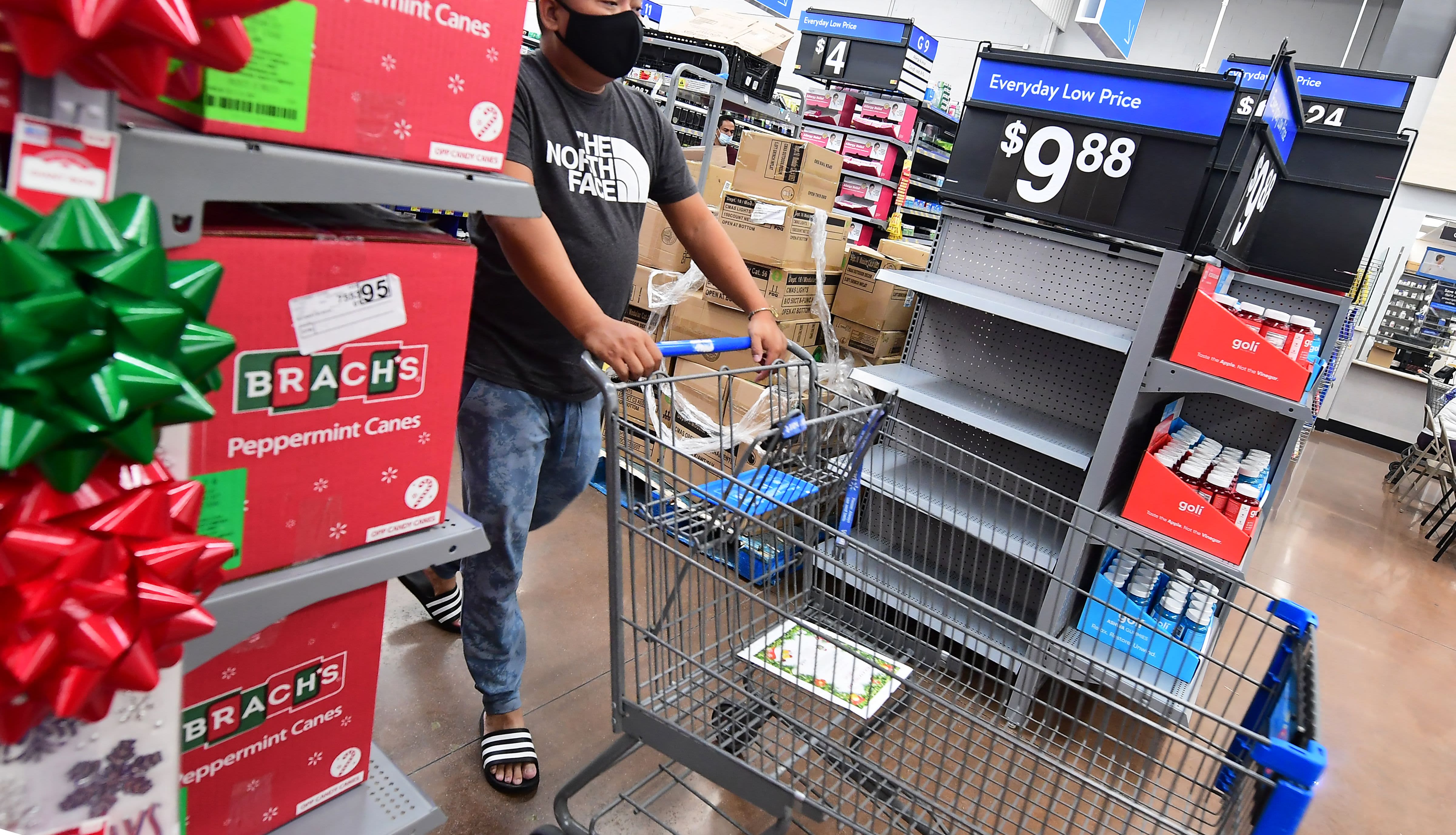The coronavirus pandemic has led to a new era of inflation inequality, economists warn, in which poor households bear the brunt of rising prices.
That’s because a bigger portion of their budget goes toward categories that have spiked in cost. Food is up 6.4% over the past year, for example, while gasoline jumped a whopping 58%. And now many people are facing those higher prices as federal stimulus programs fade away.
“They’re essentially looking to stretch a dollar most days,” said Chris Wimer, co-director of the Center on Poverty & Social Policy at Columbia University. “It’s going to lead to difficult choices between putting gas in the car or paying for your kids’ child care or putting food on the table.”
A recent analysis by the Penn Wharton Budget Model found that low- and middle-income households spent about 7% more in 2021 for the same products they bought in 2020 or in 2019. That translates into about $3,500 for the average household.
By contrast, spending by wealthy households went up by only 6%.
Shift in spending for the wealthy
This disparity is typical during inflationary periods, said Kent Smetters, who directs the Penn Wharton model. But since the 1980s — the last time prices rose this quickly — higher-income households have shifted more of their spending away from goods and toward services. For example, in 2020, food was 12.7% of the budget for the top 5% of households, compared with 16% of the budget for the bottom 20%.
Meanwhile, pandemic-related production disruptions have driven up the costs of commodities that poor households rely on.
“What they happen to be buying has been hit harder by the supply crunch,” Smetters said. “It’s broader-based than in the past.”
The findings dovetail with an analysis of credit and debit card data by Harvard Business School economist Alberto Cavallo at the start of the pandemic. He showed that low-income consumers experienced price increases that were roughly double those of wealthier ones.
In 2019, a joint paper from researchers at Columbia and the London School of Economics estimated that about 3 million more people would qualify as living in poverty if their incomes were adjusted for the inflation rates they experience.
Experts now fear that poverty will rise in early 2022 as pandemic-related federal benefits phase out and President Joe Biden’s sweeping social spending package languishes in Congress. Of particular concern is the end of monthly payments of the child tax credit, which provided families with $300 a month for each child younger than 6 and $250 for older kids.
Worry over ending tax credits
According to Columbia, the benefit kept nearly 4 million children out of poverty. The last monthly check was issued Dec. 15.
“You see a pretty clear impact of those payments,” Wimer said. “We’re obviously all worried about January.”
But Republicans fear just the opposite: That more money from Washington will lead to even higher inflation, placing a bigger burden on the poor.
“There are some provisions in this bill that maybe we could have a bipartisan agreement on once inflation calms down,” Sen. Lindsey Graham, R-S.C., told reporters earlier this month. “But right now is not the time to add any more federal spending, growing the government, creating a problem for inflation.”
That argument appears to have swayed Sen. Joe Manchin, D-W.Va., who has raised alarms about the cost of the child tax credit if it were continued over the decade. He has pushed for tighter limits on the benefit and work requirements for other social programs in the package. Without his vote in the evenly split Senate, Democrats cannot pass the bill.
“There’s a case to be made that tax credits are very necessary — that if we weren’t dealing with inflation, these are certainly a way to support the disadvantaged,” said Gustavo Flores-Macias, associate professor at Cornell University. “But the political timing is poor because of inflation.”
There is one bright spot for low-wage workers: They have received some of the biggest pay raises of the pandemic, helping to buffer the rise in prices. As of November, median wage growth over the past year has averaged more than 5% for the bottom quartile, according to the Federal Reserve Bank of Atlanta. Meanwhile, average wage growth for the top 25% has slowed this year to just 2.7% as of November.
“This is not a crisis of scarcity. It’s a crisis of everyone having more than what the market can currently supply,” Samuel Hammond, director of poverty and welfare policy at the Niskanen Center. “If we want robust economic growth, we are probably going to have to tolerate higher inflation and rising commodity prices because that is a side effect of booming consumer spending and investment.”
